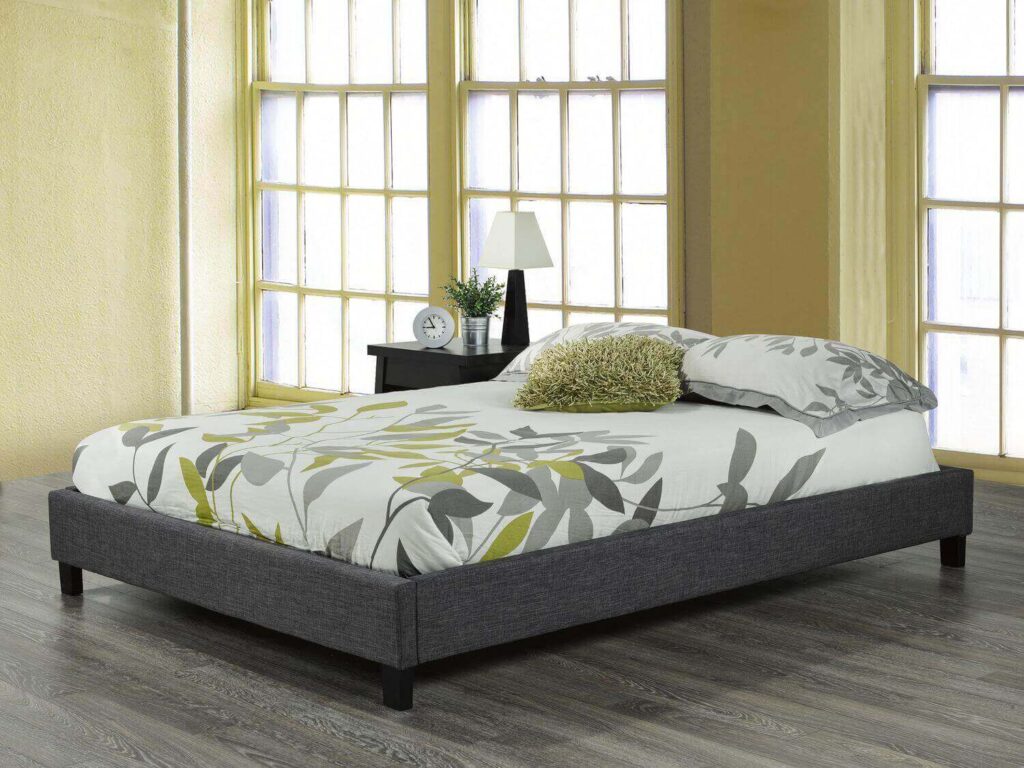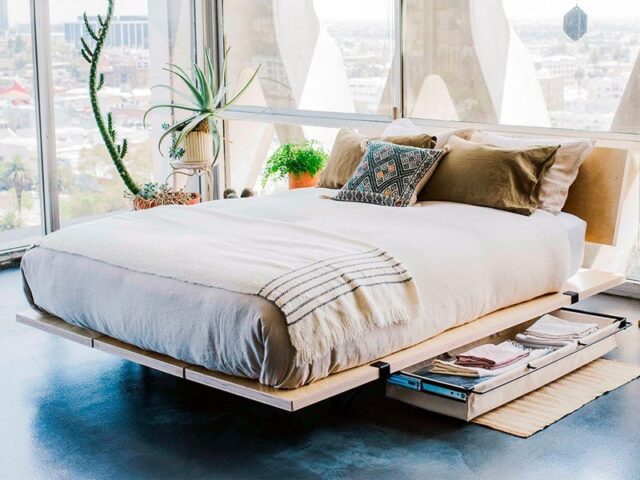
Sleep as we all know is natures sweet restorer. A good night’s sleep has an incredible amount of benefit. Waking fresh and mentally sharp. Fully physically rested. There is medical evidence to show that a good night’s sleep helps lower the blood pressure, increases libido, aids both concentration and memory, reduces stress levels, keeps the heart healthy as well as the immune system. The list goes on and on.
With all this in mind it is wise to make sure that the bedroom is furnished with a bed that is going to ensure we get the best night we can. Remember, on average we spend about a third of our lives in bed so that’s around 26 years of our lives sleeping. With that kind of time investment, we want to make sure the sleep is good.
A bed is not a small piece of furniture. Depending on the size of both the bed and the room it will take up anything from most of the floor space to a significant portion of the space available in a room. We need to balance the size of the bed, the space available to us and the ability of the bed we choose to help our sleep.

There are many different types of bed to select from and as they vary in price all the way up to significant amounts of money it is worth getting the choice right. Check out a well know online furniture store here, to see the full range available. A key component of the bed is the base. The usual purchase process starts with looking for the base that suits before moving on to the mattress as the next most significant component of our bedroom furniture.
Note for the purposes of this article we will be ignoring variants such as bunk beds or the type of study beds with desk area underneath sometimes used to maximise space in bedrooms especially child rooms. We will be focused on single level beds designed for the bedroom and not sofa beds or guest beds.
It is worth taking a moment to look at the difference between a bed frame and a bed base. It has become quite common for the two terms to be used to mean the same thing, they are however, different. What we are talking about with both of these is essentially the foundation of the bed. There are basically two main types. The bed frame and the basic, simple base sometimes referred to as a ‘box spring’ bed base though it may contain no springs whatsoever.

A bed frame is a surrounding structure that may or may not have some other ‘base’ element contained within it. One common feature of a bed frame is that it usually has a headboard and may also have a footboard. The headboard being the vertical part of the frame against which you may lay a pillow, and which gives protection between the pillow and wall for example. Bed frames may be made of a variety of materials with wood and metal being the most common.
The box spring bed base, on the other hand, is the type commonly referred to as a divan bed. This type of bed base has no head or foot board and is simply the ‘box’ on which to rest your mattress. There are variants of this basic type that are worth looking at in their own right such as the floating bed.
The bed base you go for will be very much a matter of personal choice but there are some things to take into consideration.
- Budget, how much are you prepared to spend on the bed?
- Space, is space at a premium?
- Storage, especially if space is limited is additional storage important?
- How important are style and the choice of look of the bed in your decision?

Whichever type of base you go for you will still be able to select the size you want and place the mattress type and size of your choice on top.
The advantage of a bed frame is that this is an all-in-one option. There is no need to buy a separate headboard should you want one. There are also many more style choices and options than when it comes to the divan type of bed. Depending on the make-up, number and type of the slats to support the mattress you can also use your bed frame as well as the mattress to adjust the overall firmness and feel of your bed. As bed frames are usually packed and sold broken down it can be an advantage when it comes to getting them up tight staircases or into other space restricted areas.
Some of the disadvantages of bed frames are that they are usually more expensive than a divan. The requirement for assembly may be a deterrent for some. If storage is required, it can be untidy looking or awkward to use the under-bed area for storage and may gather dust. Another potential drawback is if there is a footboard, it can sometimes be uncomfortable for those that like room for their feet to extend over the edge of the bed. Bed frames can also catch the unwary shins when moving around the bedroom.

A divan bed can be an advantage where space is restricted. This is because unlike the frame the ‘box’ of the divan is just large enough to carry the appropriate mattress and no more. In the case of the floating bed style there is an inset frame or base carrying a tabletop that supports the mattress. These can give both the appearance of more space as it ‘floats’ and the actuality of a little bit more floor room for slippers as an example to tuck in under the top of the bed itself. Other divan beds also offer storage in one of two ways. Either with one or more drawers in the base of the bed that provide extra storage space and minimise under bed dust, or the Ottoman style where the whole base is hinged and lifts up to expose almost the full bed size of storage so much more than just a drawer or two for sheets and pillowcases. Divan beds are also usually cheaper than bed frames.
Drawbacks of the divan bed are the need to buy a separate headboard should you want one. There is a smaller range so if style and fit in with the look of your room is critical this is a disadvantage. Also, the Ottoman beds can be very heavy to lift so cumbersome.
With all that said our recommendations would be based on your priority.
If style is the main driver and price less of an impediment, then it will have to be a bed frame.
If storage and cost are more important then the divan style bed with drawers is the clear winner in our minds.













